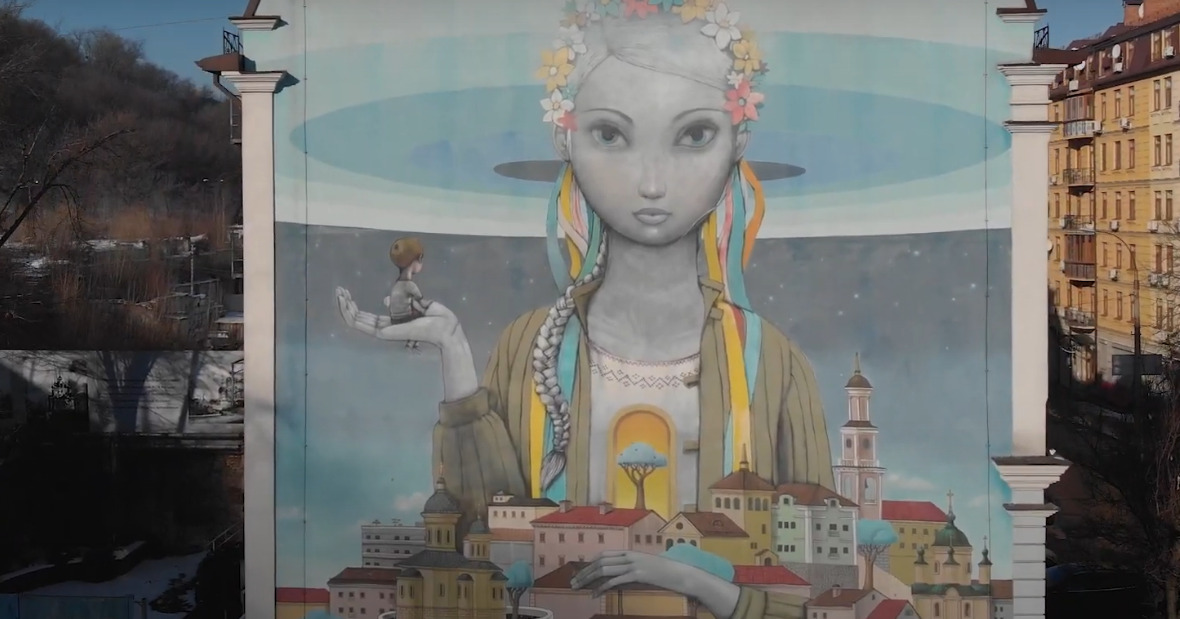
Robert Draws – Kyiv is witnessing a visual revolution. Across its streets and alleys, murals appear that refuse to forget and demand hope. These artworks give voice to communities, reflect local wounds, and call for peace amid war. The murals often avoid imagery of violence or destruction, instead opting for female portraits, bright colors, and symbols of unity and dignity. In this article I join a local guide who tours Kyiv’s most striking murals with peace messages. Each piece invites viewers to pause and listen—to see how walls have become storybooks for healing, resistance, and the dreams of a people longing for peace.
In Kyiv, murals express collective memory and aspiration in public view. The streets serve as a canvas for voices often silenced by conflict. One guide described that “the problems or major events in our society” can be seen on Kyiv’s walls. Murals from the Revolution of Dignity, from the occupation of Crimea, and from ongoing conflict in the east all leave their traces. These works are not merely decoration but bridges between art and activism. They connect residents and visitors alike to stories of loss, resistance, and hope. Through them, walls talk back, reminding people of history, trauma, accountability, and the value of peace.
“Read about: Too Adorable! National Daughter Day Images and Messages That Will Break the Internet”
Many murals in Kyiv use striking symbolism to tell stories of recovery and national identity. One piece, titled The Rebirth, shows a woman holding a child, wearing traditional wreaths and a military jacket. This mural stands in Podil and proclaims a belief in rebuilding the city, restoring the nation, and trusting in a better future. Nearby, other murals like A Little Citizen depict children with Ukrainian passports, birds, or symbols tied to Crimea’s heritage. Their colors mirror the Ukrainian flag, a silent assertion that the occupied territories are not forgotten. These layered symbols allow the viewer to read meaning beyond surface beauty, inviting reflection on belonging, displacement, and justice.
“Read more: Shocking End: Assata Shakur Dies at 78 in Cuba After Decades on the Run!”
Other murals take on forms that reject war itself. In “Fragments of Hope,” large hands break a sword, symbolizing a desire to cease violence and pick up peace instead. The iconic Motherland Monument in Kyiv is echoed here, but reimagined to urge disarmament. In “Shelter,” two walls depict a woman offering protection and solace. This piece addresses the plight of internally displaced persons fleeing war zones in the east and Crimea, and envisions coexistence and care in the capital. These visual metaphors speak in silence but shout meaning. They reflect how art can confront trauma, heal communities, and propose new futures built on empathy, not conflict.
Murals in Kyiv already number over a hundred across diverse neighborhoods. These works emerge from grassroots art associations, local communities, and international collaboration. In many cases they are not self‑explanatory, and require public storytelling, workshops, or social media panels to unfold their messages. When communities help paint parts of them, or when explanations accompany a mural, the art becomes a tool for dialogue rather than division. Over time these murals may shift mindsets, restore dignity, and foster reconciliation. They plant seeds of change rather than demand instant transformation. In a city scarred by war, the walls themselves deliver a message that people draw, paint, and rebuild peace even from rubble.
This article is sourced from www.peaceinsight.org and for more details you can read at robertdraws
Writer: Sarah Azhari
Editor: Anisa